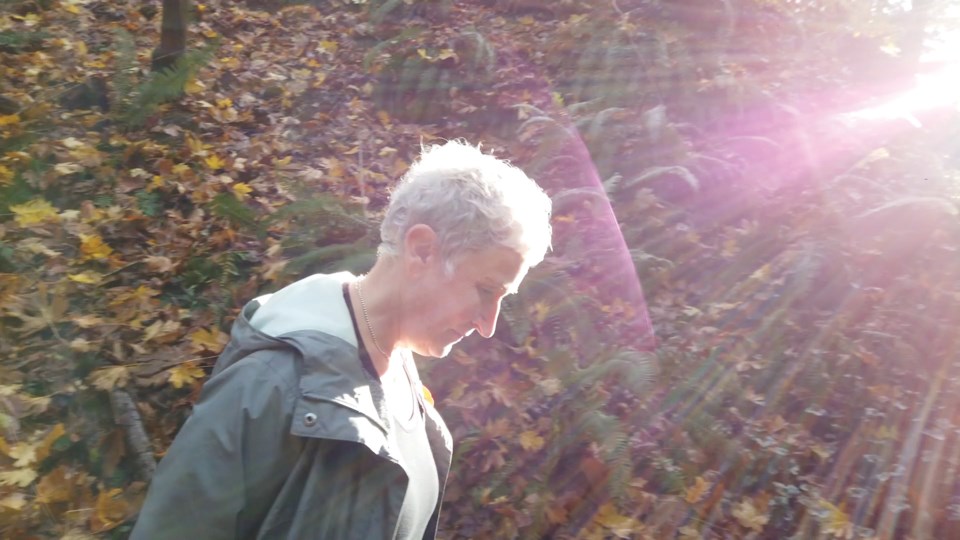The world premiere of a film commissioned by the Sunshine Coast Hospice Society about approaching the end of life with grace attracted a capacity audience of invited guests to the Gibsons Heritage Playhouse on Saturday, April 30. Scores of other spectators participated remotely via a live video stream.
Living With Dying is an hour-long documentary produced by Gibsons filmmakers Nova Ami and Velcrow Ripper. The two previously co-directed the award-winning 2018 film Metamorphosis: A Poem for the Planet.
Donna Shugar, Chair of the Education and Outreach Program of the Hospice Society, served as the master of ceremonies for the premiere, which was preceded by territorial acknowledgments from representatives of the Sḵwx̱wú7mesh and shíshálh nations.
Shugar was part of a team of hospice volunteers that explored creative alternatives when COVID-19 restrictions inhibited in-person outreach efforts.
“The education and outreach program of the hospice society is one of the ways that we engage with people and try to bring the subject of death and dying into the conversation,” she said. “We provide opportunities to learn, to share, to provoke thought about this difficult subject.”
Katie Clogg, then a member of the Hospice Society’s communications staff, began posting stories depicting “Compassionate Conversations” to the group’s website.
Shugar, together with fellow volunteers Marlena Blavin and Corinne Thorsell, decided that a film would amplify Clogg’s efforts by telling the stories of Sunshine Coast residents grappling with the impact of terminal illness.
“Living With Dying is the culmination of two years of Zoom conversations,” Shugar said. “We learned how to become executive producers.” They enrolled in a workshop, secured funding, and defined a vision for the movie. At last, they connected with filmmakers Ami and Ripper who conducted interviews, shot the footage, and edited the result.
The film follows the story of several individuals navigating the complexity and the consequences of terminal illness. Through frank conversations, the realities of death are discussed in unflinching — yet sensitive — terms. The documentary explores Medical Assistance in Dying (MAID) as well as the circles of support that are available to those supporting loved ones at the end of life.
The interviews are filmed in intimate settings within homes or outdoors. They are intercut with solemn sequences depicting the moss-carpeted trails, saltwater swells and tree-filtered skies of the Sunshine Coast. The interludes give the audience space to react and reflect on emotionally-charged content.
“As filmmakers, as documentarians, as storytellers, this was a dream project for us,” said Ami. “It has all the elements that drive us to make films. It’s universal experiences and deep meaningful exchanges with our subjects that are created in the space that we have together.”
The film’s conclusion was met with a standing ovation. Each spectator received a cedar bough and a rose, symbols of vitality and interconnection. During a panel discussion, Ripper said that he and Ami are considering turning the project into a longer feature film.
The Hospice Society’s Threshold Choir — a group of four women who sing at the bedside of dying people — performed at the beginning and end of the premiere event.
Living With Dying will be available for public viewing on the Hospice Society’s website following a technical upgrade next month.
“The most important part of the work [of Ami and Ripper],” said Shugar, “is that they created a safe, tender space for people to share some extremely personal and intimate reflections about their situation—whether they’re caregivers or patients,or professionals. We’re really grateful for that, and for the chance to work with such talented and sensitive people.”



.jpg;w=120;h=80;mode=crop)